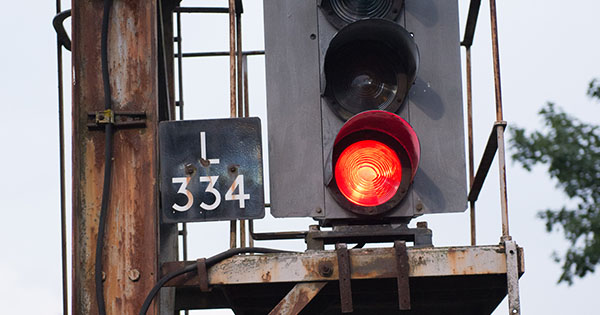Data fusion tells us the number of signals approached at red

Relevant RTS critical priority(ies):
Data driven
The risk from signals passed at danger (SPADs) is a key management area for the rail industry. Although the risk is low – less than 1% of the total system risk – SPADs have the potential to result in catastrophic outcomes, as occurred in 1999 at Ladbroke Grove, where 31 people lost their lives.
To understand the risk from SPADs, knowing the number of times trains approach signals at red is key. In the past, there has been no robust way of doing this, and the main approach was to carry out periodic surveys of train drivers. Making better use of existing data sources was the key to addressing this problem.
A demonstrator project was set up under RSSB’s Strategic Partnership with the University of Huddersfield. The project developed mathematical algorithms for use with Network Rail’s open data feeds on train position and signal status, to identify when trains approach signals at red. This data is available for around 50% of train movements on the GB network so it is not a complete picture of red aspect approaches, but it is a large step forward from the previous approach.
Following production of the demonstration version of the Red Aspect Approaches to Signals (RAATS) toolkit which was based on a historic sample of data, work took place for a release version based on on-going and updated data. This was made available in Autumn 2019.
The RAATS toolkit enables the user to identify rates of occurrence of red aspects at individual signals, groups of signals or whole signal areas, and also allows analysis by time of day, day of week and train class. The data can be downloaded and compared with data on SPADS, to identify times or locations where the risk from SPADS appears to be higher than average. Tracking exposure to red signals also helps operators to understand the safety and performance impacts of changes to the timetable.
A number of other projects are currently taking place to further develop the RAATS toolkit. The first is focussing on developing the algorithms so that red aspect approaches can be analysed by train service, as well as by signal. The second is focussing on expanding the coverage of the tool, to areas of the network that do not have data on signal status. Once successful, this is expected to expand coverage to more than 80% of the rail network.
Back



